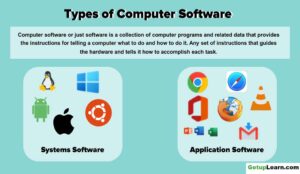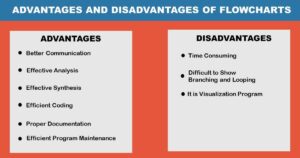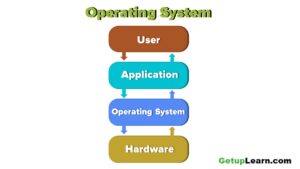Table of Contents
What is Computing?
Computing is any goal-oriented activity requiring, benefiting from, or creating computing machinery. It includes the study and experimentation of algorithmic processes and the development of both hardware and software.

Table of Contents
It has scientific, engineering, mathematical, technological, and social aspects. Major computing disciplines include computer engineering, computer science, cybersecurity, data science, information systems, information technology, and software engineering. Wikipedia
Evolution of Computing Machine
During the period from 3000 BC to 1450 __ AD, human beings started communicating and sharing information with the aid of simple drawings and later through writings. The introduction of numbers led to the invention of Abacus, the first computing machine. In the following section.
We will examine some important milestones in the evolution of computing machine:
- Abacus
- Napier Bones
- Pascaline
- Leibniz Calculator
- Jacquard Loom
- Difference Engine
- Analytical Engine
- Hollerith Machine
- Mark 1
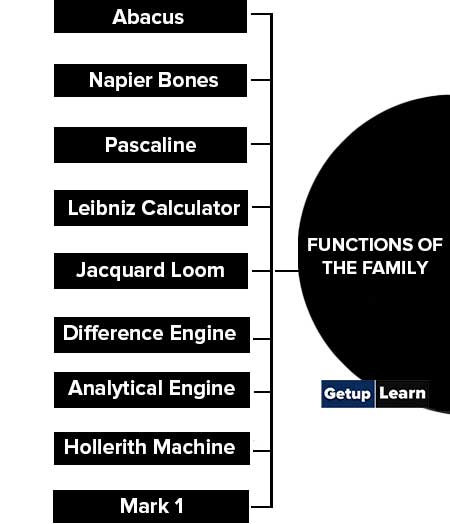
Abacus
The stone age man used pebbles for counting cattle. Later on when man become more civilized, Abacus came in use. Abacus seems to be the earliest calculating machine, which was developed by Chinese 3000 years ago. It consists of a rectangular wooden frame with horizontal rods which carry round beads.
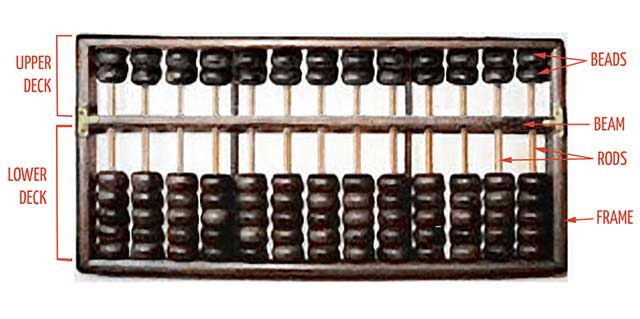
Counting is done by shifting the beads from one side to another. Abacus is still being used in China, Japan and part of Soviet Russia for Primary Education.
The abacus is also called a counting frame, a calculating tool for performing arithmetic operations. The Chinese improved abacus as a frame holding vertical wires, with seven beads on each wire. A horizontal divider separates the top two beads from the bottom five.
Addition and multiplication of numbers was done using the place value of digits and position of beads in an abacus.
How Abacus works:
The abacus works on the basis of the place value system. Reading it is almost like reading a written numeral. Each of the five beads below the bar has a value of 1. Each of the two beads above the bar has a value of 5. The beads which are pushed against the bar represent the number.
Abacus is used even today by children to learn counting. A skilled abacus operation can be as fast as a hand held calculator. (a) shows the addition of two single digit numbers. (b) shows how two numbers (54 and 46) are added.
Napier Bones
The next pioneering contribution was made in 1614AD by a Scottish mathematician named John Napier. He evolved the system of the logarithm by 1617 he had improved on his device which could performed multiplication and division as well. This was later known as Napier’s bones.
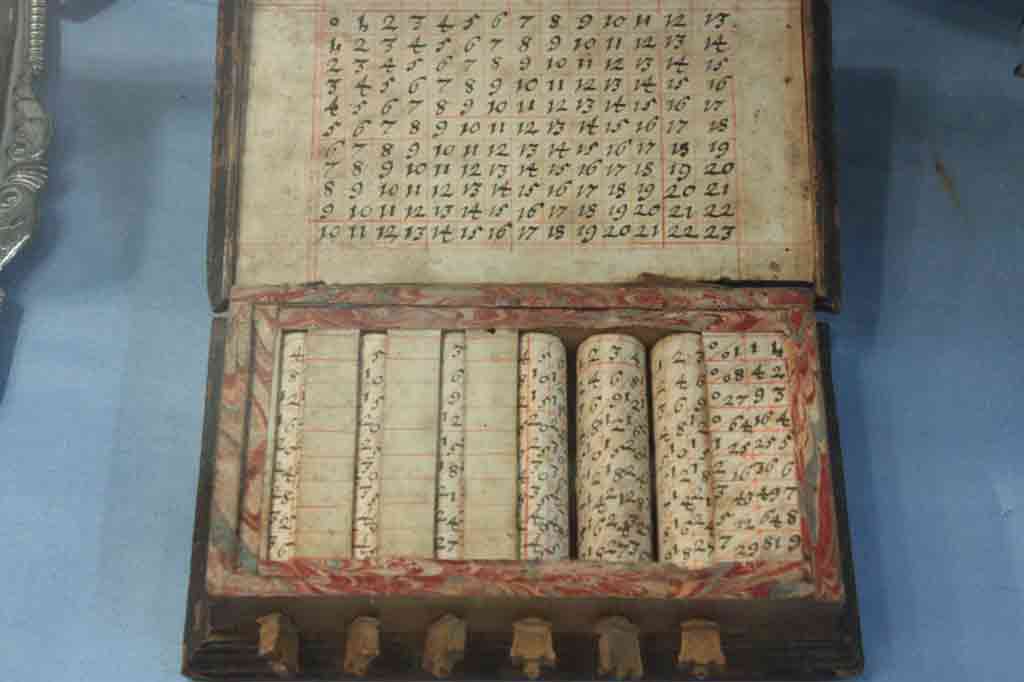
The strips of Napier’s bones are the times tables. Each square gives 2 x number, 3 x number and so on, but the tens and units are written above and below a slanting line respectively. Napier’s bones is good for multiplying a long number by a single digit number. Let us multiply 425928 by 7.
First take the strips for 4, 2, 5, 9, 2, and 8, and fit them into the frame. Look at the squares next to the 7 on the side. It is colored green in Figure. Now read the digits – any number within slanting lines must be added.
So the answer is 2(8+1)(4+ 3)(5+6)(3+1)(4+5) 6 or 297(11)496. All the digits except 11 are in their position. 11 needs to have 10 carried to the left. This makes 29(7 + 1) 1496 or 2981496, which is the correct answer.
Pascaline
The first mechanical calculating machine was made in 1642 by the great French mathematician and philosopher Blaise Pascal. His machine was a simple calculating used for addition and subtraction purposes.

Pascal invented this arithmetic calculator to assist his father in his work as a tax collection supervisor. This machine was operated by dialing a series of wheels, gears and cylinders. He called it ‘Pascaline‘ .
Consider adding the numbers 20 and 81 using Pascaline. Initially, the Pascaline will be set to 0 for all the six digits. To dial 20, you just have to put your finger into the space between the spokes next to digit 2 of the second wheel and rotate the wheel in clockwise direction until your finger strikes against the fixed stop on the bottom of the wheel.
This rotation transmits the value of two into the second window from the right. Now the machines will display number 0020. To dial 81, put your finger into the space between the spokes next to digit 8 of the second wheel and rotate it.
After the second drum reaches number 9, the gears inside Pascaline will carry to the next drum one unit and the third drum of the machine will rotate by one-tenth.
So after the end of dialing number 8, the machine will display the number 100. Now put your finger into the space between the spokes next to digit 1 and rotate it in the same way you did before. Now the machine will display the number 0101, which is the final result of the addition.
Leibniz Calculator
In 1673 the German mathematician-philosopher Gottfried Wilhelm von Leibniz designed a calculating machine called the Step Reckoner. The Step Reckoner expanded on Pascal’s ideas and extended the capabilities to perform multiplication and division as well. Leibniz successfully introduced this calculator onto the market.
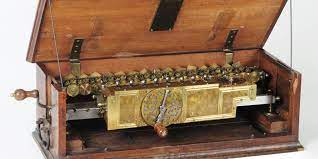
His unique, drum-shaped gears formed the basis of many successful calculator designs in later years. The Step Reckoner is a calculating machine that was based on the same principle as that of the PASCAL’s. The only added feature was a system of shift mechanism, operating through a series of the slide.
Jacquard Loom
The Jacquard loom is a mechanical loom, invented by Joseph Marie Jacquard in 1801, that simplifies the process of manufacturing textiles with complex patterns. The loom is controlled by punched cards with punched holes, each row of which corresponds to one row of the design.
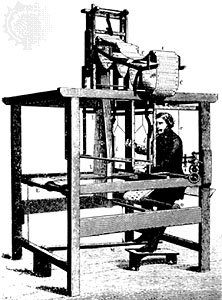
Multiple rows of holes are punched on each card and the many cards that compose the design of the textile are joined together in order. The Jacquard loom not only reduced the amount of human labor, but also allowed to store patterns on cards to be utilized again to create the same product.
These punched cards were innovative because the cards had the capability to store information on them. This ability to store information triggered the computer revolution. The punched card concept was adopted by Charles Babbage to control his Analytical Engine and later by Herman Hollerith.
Difference Engine
The first step towards the creation of computers was made by a mathematics professor, Charles Babbage. He dreamed of removing the human element from the calculations.
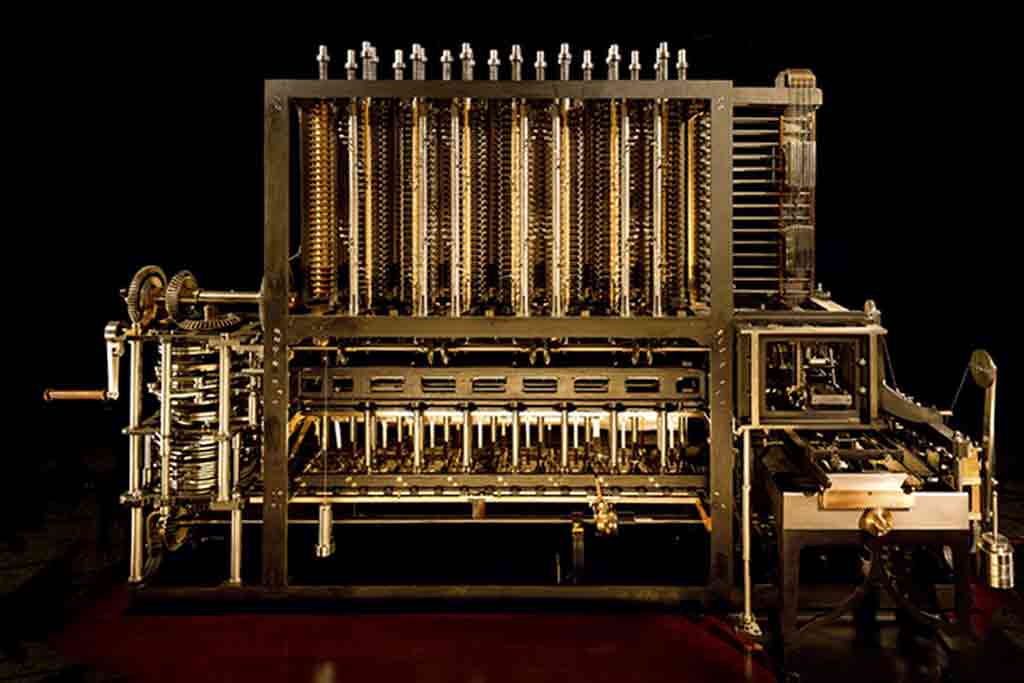
He realised that all mathematical calculations can be broken up into simple operations which are constantly repeated and these operations could be carried out by an automatic machine.
Charles Babbage started working on a Difference Engine that could perform arithmetic calculations and print results automatically. In 1822, Babbage invented the Difference Engine to compile mathematical tables. On completing it, he conceived the idea of a better machine that could perform not just one mathematical task but any kind of calculation.
Analytical Engine
In 1833, Charles Babbage started designing the Analytical Engine – the real predecessor of the modern day computer. Analytical Engine marks the development from arithmetic calculation to general-purpose computation. The Analytical Engine has many features found in the modern digital computer.

The Engine had a ‘Store’ (memory) where numbers and intermediate results could be stored, and a separate ‘Mill’ (processor) where arithmetic processing could be performed. Its input/ output devices were in the form of punched cards containing instructions.
The Difference Engine and the Analytical Engine earned Charles Babbage the title ‘Father of Computer’.
Hollerith Machine
In 1887, An American named Herman Hollerith fabricated the first electromechanical punched card tabulator that used punched cards for input, output and instructions. The card had holes on them in a particular pattern, having special meaning for each kind of data. In 1880’s, the US Census Bureau had huge amounts of data to tabulate.
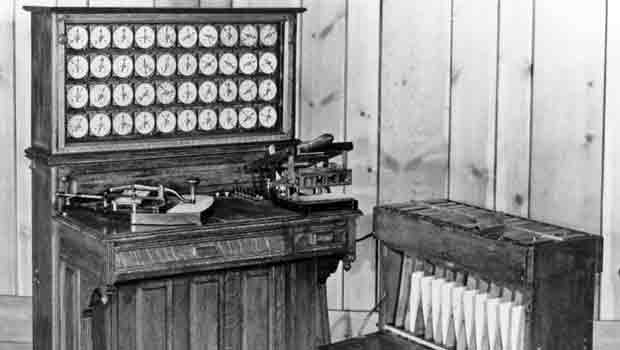
It would take at least ten years to analyse population statistics manually. Herman Hollerith’s greatest breakthrough was his use of electricity to read, count and sort punched cards whose holes represented data. His machines were able to accomplish the task in one year.
In 1896, Hollerith started the Tabulating Machine Corporation which after a series of mergers, became International Business Machines (IBM) Corporation in 1924.
Mark 1
In 1944, Howard Aiken, in collaboration with engineers at IBM, constructed a large automatic electromechanical computer. Aiken’s machine, called the Harvard Mark I, based on Babbage’s Analytical Engine, handled 23-decimal-place numbers and could perform all four arithmetic operations.

It was preprogrammed to handle logarithms and trigonometric functions. Using Mark I, two numbers could be added in three to six seconds. For input and output, it used paper-tape readers, card readers, card punch and typewriters.

